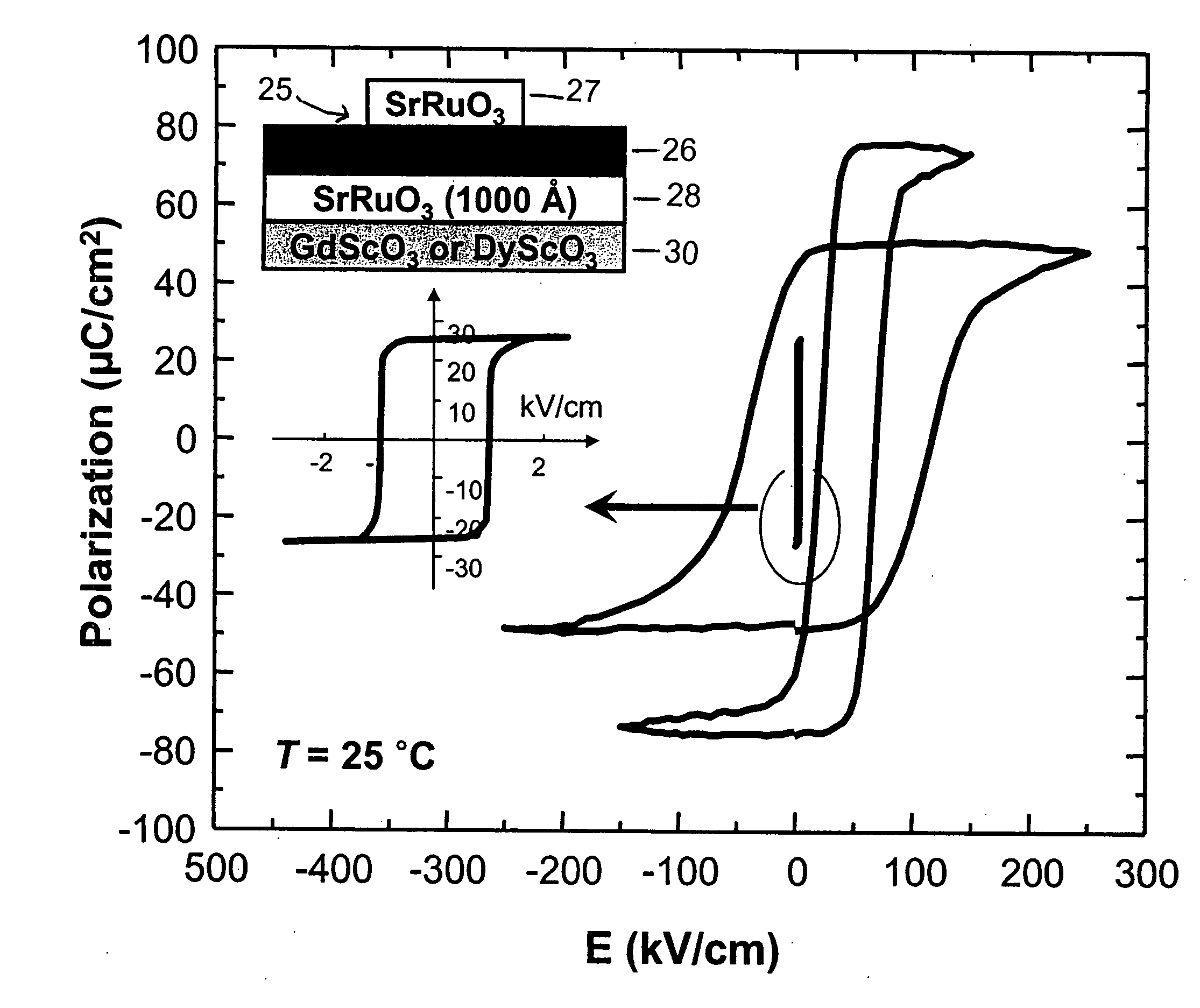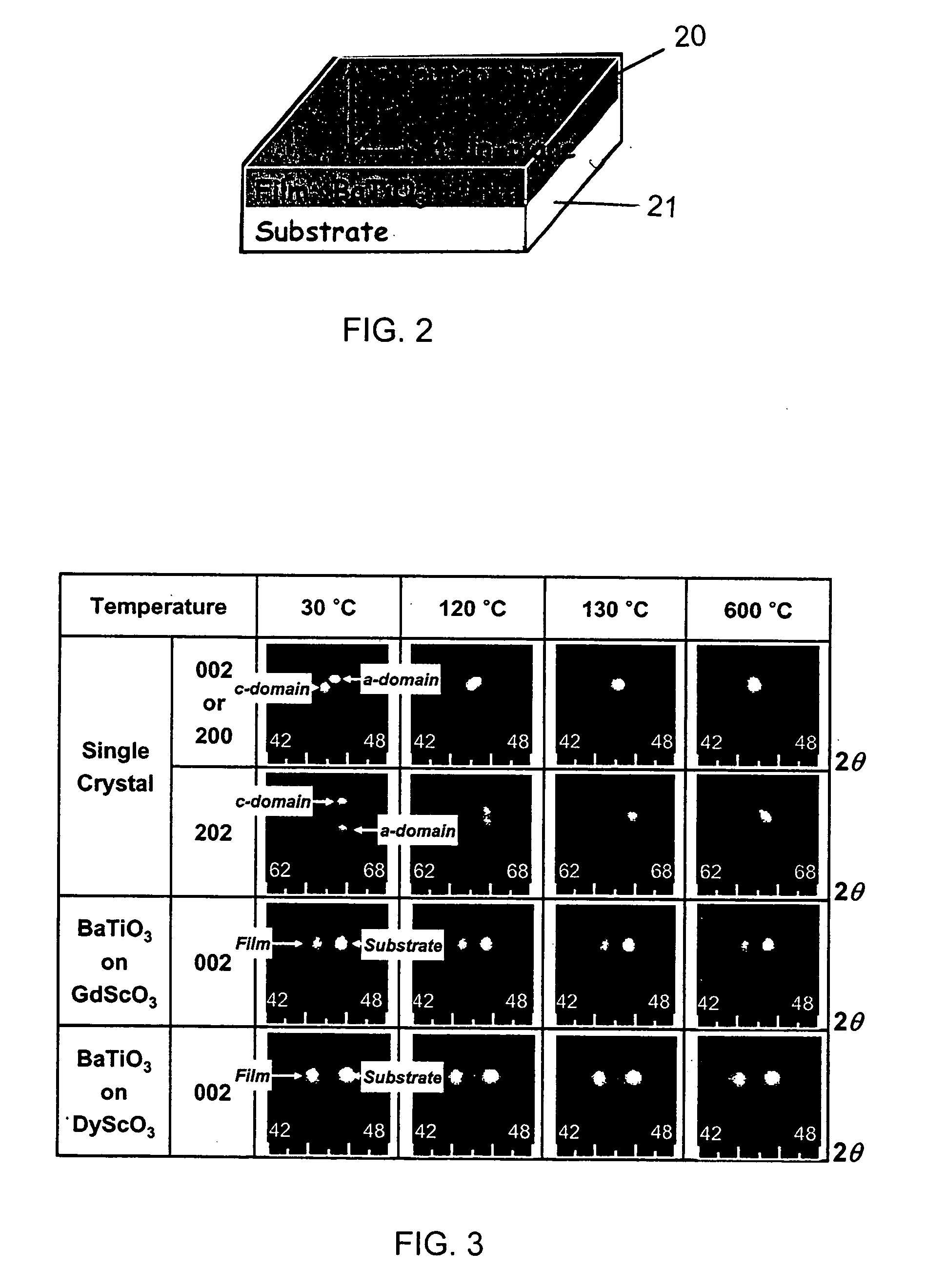Strain-engineered ferroelectric thin films
a thin film, ferroelectric technology, applied in the field of thin film structures, can solve the problems of degrading film properties and complicating their introduction into semiconductor fabrication facilities, and achieve the effects of enhancing the properties of ferroelectric materials, reducing the number of defects, and increasing the number of defects
- Summary
- Abstract
- Description
- Claims
- Application Information
AI Technical Summary
Benefits of technology
Problems solved by technology
Method used
Image
Examples
Embodiment Construction
[0023] The present invention utilizes detailed investigations of the properties of ferroelectric thin films to achieve significantly improved ferroelectric properties as compared to the bulk ferroelectric. The present invention may be used with various crystalline ferroelectrics, examples only of which are BaTiO3, lead zirconium titanate (PZT), BiFeO3, and lead magnesium niobate-lead titanate (PMN-PT). For purposes of illustration, the invention is exemplified below with respect to BaTiO3, a preferred ferroelectric material, but it is understood that the invention is not limited thereto.
[0024] To predict the TC enhancement and the temperature dependence of the lattice parameters of BaTiO3 thin films under large biaxial strains using Landau thermodynamic theories, we determined a new set of phenomenological coefficients, since existing ones are only applicable to small compressive strains (C enhancement predicted from thermodynamic analysis for a BaTiO3 thin film under biaxial strai...
PUM
| Property | Measurement | Unit |
|---|---|---|
| thickness | aaaaa | aaaaa |
| thickness | aaaaa | aaaaa |
| thick | aaaaa | aaaaa |
Abstract
Description
Claims
Application Information
 Login to View More
Login to View More - R&D
- Intellectual Property
- Life Sciences
- Materials
- Tech Scout
- Unparalleled Data Quality
- Higher Quality Content
- 60% Fewer Hallucinations
Browse by: Latest US Patents, China's latest patents, Technical Efficacy Thesaurus, Application Domain, Technology Topic, Popular Technical Reports.
© 2025 PatSnap. All rights reserved.Legal|Privacy policy|Modern Slavery Act Transparency Statement|Sitemap|About US| Contact US: help@patsnap.com



